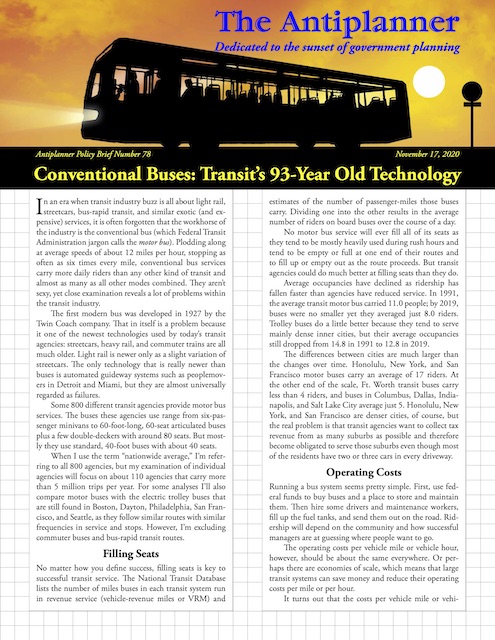In an era when transit industry buzz is all about light rail, streetcars, bus-rapid transit, and similar exotic (and expensive) services, it is often forgotten that the workhorse of the industry is the conventional bus (which Federal Transit Administration jargon calls the motor bus). Plodding along at average speeds of about 12 miles per hour, stopping as often as six times every mile, conventional bus services carry more daily riders than any other kind of transit and almost as many as all other modes combined. They aren’t sexy, yet close examination reveals a lot of problems within the transit industry.
 Click image to download a five-page PDF of this policy brief.
Click image to download a five-page PDF of this policy brief.
The first modern bus was developed in 1927 by the Twin Coach company. That in itself is a problem because it one of the newest technologies used by today’s transit agencies: streetcars, heavy rail, and commuter trains are all much older. Light rail is newer only as a slight variation of streetcars. The only technology that is really newer than buses is automated guideway systems such as peoplemovers in Detroit and Miami, but they are almost universally regarded as failures. Continue reading







